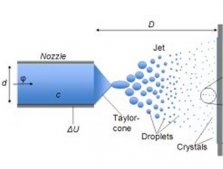
(Nanowerk Spotlight) The burden of foodborne diseases worldwide is huge, with serious economic and public health consequences. The CDC estimates that each year in the USA approximately 48 million people get sick, 128,000 get hospitalized and 3,000 die from the consumption of food contaminated with pathogenic microorganisms.
The food industry is in search of effective intervention methods that can be applied from 'farm to fork' to ensure the safety of the food chain and be consumer and environment friendly at the same time.
In the food industry, chemicals are routinely used to clean and disinfect product contact surfaces as well as the outer surface of the food itself. These chemicals provide a necessary and required step to ensure that the foods produced and consumed are as free as possible from microorganisms that can cause foodborne illness.
Food activists are concerned that some of the chemicals used by the food industry for disinfection can cause health issues for consumers. A prime example is the current discussion in Europe about 'American chlorine chicken'. Most U.S. poultry is chilled in antimicrobial baths that can include chlorine to keep salmonella and other bacteria in check. In Europe, chlorine treatment was banned in the 1990s out of fear that it could cause cancer.
Trying to develop chemical free disinfection techniques, researchers at the Center for Nanotechnology and Nanotoxicology at the Harvard T. Chan School of Public Health are currently exploring the effectiveness of a nanotechnology based intervention method for the inactivation of foodborne and spoilage microorganisms on fresh produce and on food production surfaces.
This method, originally reported in Environmental Science: Nano ("A chemical free, nanotechnology-based method for airborne bacterial inactivation using engineered water nanostructures") utilizes Engineered Water Nanostructures (EWNS) generated by electrospraying of water.
